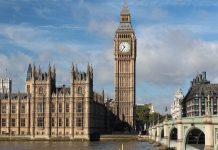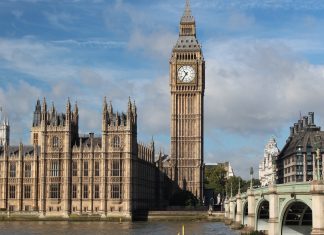Travellers arriving in England this week are benefitting from a cheaper and simpler COVID-19 testing system. But it can still be a costly process if you don’t plan ahead. Read on for the rules you have to follow and how to save some money.
As of Sunday, only a lateral flow test is required to prove you are virus-free, as opposed to the more costly PCR test. This must be taken on or before day 2 in the country.
However, 50 per cent of new arrivals and returning holidaymakers are confused about the new testing system, according to one of the kit suppliers.
For some this is a case of keeping track of the UK’s constantly changing travel rules. While others have been tempted aboard by the relaxed rules for the first time, and are now working out what they mean.
A government-approved test provider said it is experiencing “phenomenal demand” from travellers, with almost 30 per cent of Brits considering a winter break.
Avi Lasarow, CEO of Prenetics in Europe, the Middle East and Africa says, “Half the public still seem unaware [of] what the new lateral flow testing regime entails. Our advice is find out about the new system before you go and double check the entry requirements to countries you’re travelling to.”
With that in mind, we’ve broken down exactly what the new day 2 testing system involves, and where you can find the cheapest kits.
How do you do a day 2 lateral flow test?
If you are fully vaccinated and travelling to England from a non-red list country, you need to book and pay for a COVID-19 in advance of flying. This is because you’ll need to put your booking reference on your Passenger Locator Form.
You need to book to have the test done on or before the end of day 2. Day 0 is the day you land. This means you are well within the rules to get tested when you land at the airport. Most airports have testing centres. They do tend to be more expensive than doing your own test at home, but could save you time and hassle.
You can choose a PCR test if you prefer, but a negative result on an antigen test is now fine too. It must be from a UK government-approved private provider.
The free NHS lateral flow tests which UK residents have been routinely ordering to check if they have COVID-19 cannot be used for this purpose.
A photo of the completed lateral flow test and your unique booking reference must then be uploaded for the testing company to see. Forgetting to do this could result in a £1,000 (€1,181) fine. But don’t worry, you’ll get full instructions from the testing company.
If you do test positive, you will need to self-isolate and take a PCR test to confirm, at no extra cost. This is to help identify new variants of the virus. If that’s positive too, 10 full days of self-isolation await.
Don’t forget to also complete a passenger locator form in the 48 hours before you arrive back in England.
Which is the cheapest test kit provider?
The move to lateral flow tests significantly reduces the cost of travelling abroad. And unlike with PCR tests, the prices don’t vary too wildly.
There are 42 different options listed on the government’s website, starting at £8.99 (€10.60) from Covid Testing Direct for its click and collect service which must be picked up before you leave the UK.
£22 (€26) is around the average price for the kit, with Boots UK charging just under that.
You can also book your rapid antigen tests with airlines and holiday operators. The cheapest of these is with TUI, which has partnered with Randox to offer a home testing kit for £15 (€17.70).
























